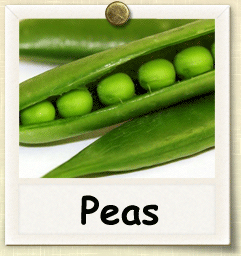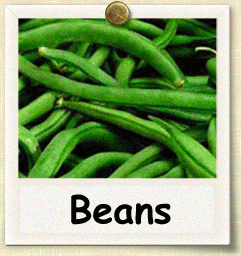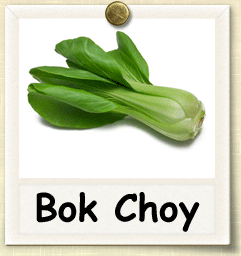Saturday, August 18, 2012
Many of you at the Community Garden have asked about the natural bug spray and other natural gardening helpers that I have talked about around the garden. If you are looking for a natural mix to keep away bugs, thugs and other things from your gardens, a way to get rid of voles and moles in your yard or a tonic to perk up your lawn after 90 degree weather for an extended lenth of time,check out Jerry Baker's website at http://www.jerrybaker.net/garden/homepage.aspx With a few common household ingredients you can take care of your yard, gardens and yard.
Sunday, August 5, 2012
 |
| Early Season Home 4X4 |
 |
| August Community Garden 4X4 |
Wednesday, August 1, 2012
 |
PeasGROWING NOTESYields best in full sun. Prefers well-drained soil, average fertility, high in organic matter with pH 6.0 to 7.0. Widely adapted, but prefers cool, damp weather. Good soil structure is important. Avoid compacting soil by working it when it’s still too wet. Leafless varieties have particularly fine texture. MAINTAINING Sow seed in spring as soon as you can work the soil - as early as late March or early April depending on how quickly the soil warms and dries. Peas planted in cold soil (40 F) are slow to germinate. Later plantings made when the soil is warmer (60 F or more) often catch up quickly with earlier plantings. Use raised beds if your soil is slow to drain. Make additional plantings through early- to mid- May, or plant varieties with different maturity dates to increase the harvest period. Plant seeds 1 to 2 inches deep, 1 to 4 inches apart in rows 18 inches apart. Or sow about 1 inch apart in a 3-inch-wide band (about 25 seeds per foot). Shallow planting is best when soils are cool and wet. Plant deeper if soil is dry. A quick way to seed is to make a furrow or trench with a hoe, place seed in the furrow, cover and firm. Do not thin. Erect trellis for tall-growing, vining types at planting using chicken wire, brush or other suitable trellis material. If trellising, increase row spacing to 4 to 6 feet. Keep soil moist, but avoid heavy watering during flowering, which can interfere with pollination. Intercrop peas with fast-growing cool-season crops such as spinach or radishes. After final harvest, follow with late squash plantings or fall-harvested cool-season crops such as broccoli, leeks or potatoes. Sow fall crops about 8 to 10 weeks before first frost date. Fall crops can be disappointing if hot weather persists. Powdery-mildew-resistant varieties are best for fall crops. Do not use high-nitrogen fertilizers. Too much nitrogen will result in lush foliage but poor flowering and fruiting. Inoculation with rhizobia bacteria may be beneficial if peas have not been grown in the past. Do not plant peas in the same place more than once in every 4 years. Avoid planting where in places where peas have suffered before from root rot. HARVESTING Pea pods usually measure anywhere from 1-3/4 and 6 inches. They are best harvested when they are slightly immature as this will give you the sweetest taste. The peas that are ready first will be located at the bottom of the plant and once they are ready start picking because this will encourage the plant to produce more. You will know they are ready when the pod looks green, shiny, and puffy and you pinch the pod you can feel fully formed round fruit. Another way to check is to look at the seam on the sides of the pods. Rip peas will change from a convex to a concave shape. To pick peas hold on to the pod with one hand and vine with the other and tug it off. They tend to want to hold on to the vine so make sure you don’t tug the vine out of the ground. If you are growing snap peas make sure to pick them before the peas inside the pod fill out as their sweetness diminishes as the seed grows. Snow peas should be harvested when the pods are still flat. Peas quickly loose their sweetness after harvesting so make sure to use them immediately. If you don’t need them right away make sure to freeze them to preserve their flavor. http://www.heirloom-organics.com/guide/va/guidetogrowingpeas.html |
 |
Beans |
GROWING NOTES
Beans generally do not respond well to transplanting, and are usually direct sown around or just after the last spring frost. The most important point about growing beans is not to plant them too early. They will rot in cool, damp soil. Even so, many beans require a long growing season of 80 days or more. To get an earlier start, you can put down black plastic, to warm the soil.
Most beans should be sown with the eye of the been facing downward, 1-2" deep, approximately 4-6" apart, with 24" or more between rows. The ideal site will be sunny, well-drained, moderately fertile, and slightly acidic (pH 6.0-7.0). Additionally, bean plants should be well-ventilated to promote proper development and deter mildew or mold that can trouble plants. Beans should not be grown in the same spot more than once every four years, and can be mutually beneficial with corn, strawberries and cucumber. Avoid planting beans near onion or fennel.
Plant bush beans in either rows or blocks, with 4-6 inches between each seed. Plant the seeds 1-2 inches deep and be sure to water the soil immediately and regularly, until it sprouts. Pole beans will need some type of support to grow on. Be sure the trellis, teepee, fence or whatever is in place before you seed. Plant seeds at a rate of about 3-6 seeds per teepee or every 6 inches apart.
MAINTAINING BEANS
When watering, try to avoid getting the leaves wet as this can promote fungus or other damaging conditions that beans can be susceptible to. Most types of beans are somewhat drought resistant, but check the surface of the soil frequently and water when the top layer has become dried out.
MAINTAINING BEANS
When watering, try to avoid getting the leaves wet as this can promote fungus or other damaging conditions that beans can be susceptible to. Most types of beans are somewhat drought resistant, but check the surface of the soil frequently and water when the top layer has become dried out.
Once established, beans generally will not require fertilizing and will generate their own nitrogen. However, if the leaves of young plants are pale this is an indication of nitrogen deficiency and starts can be fertilized with with fish emulsion or other natural nitrogen rich fertilizer.
Bush beans begin producing before pole beans and often come in all at
once. Staggered planting, every 2 weeks, will keep your bush beans going longer. Pole beans need time to grow their vines, before they start setting beans. The pole bean crop will continue to produce for a month or two.
once. Staggered planting, every 2 weeks, will keep your bush beans going longer. Pole beans need time to grow their vines, before they start setting beans. The pole bean crop will continue to produce for a month or two.
Pole beans may need some initial help in climbing. Keep the bean plants well watered. Mulch helps keep their shallow roots moist. Long producing pole beans will benefit from a feeding or a side dressing of compost or manure about half way through their growing season.
HARVESTING
Harvesting beans is an ongoing process. You can start to harvest anytime, but gardeners usually wait until the beans begin to firm up and can be snapped. They are generally about as think as a pencil then. Don't wait too long, because beans can become overgrown and tough almost overnight. Harvest by gently pulling each bean from the vine or by snapping off the vine end, if you are going to be using the beans right away.
Harvesting beans is an ongoing process. You can start to harvest anytime, but gardeners usually wait until the beans begin to firm up and can be snapped. They are generally about as think as a pencil then. Don't wait too long, because beans can become overgrown and tough almost overnight. Harvest by gently pulling each bean from the vine or by snapping off the vine end, if you are going to be using the beans right away.
Depending on whether the bean is a snap, shell, or dry variety will impact when and how the bean should be harvested.
Snap beans are harvested while the pod and enclosed seeds are still relatively immature. Compared to the other two types of beans, snap beans have the smallest window for an ideal crop. Beans that are harvested too early will not develop the proper flavor and texture. On the other hand, beans that are allowed to develop on the plant too long will be tough and somewhat unpalatable. Perhaps the best simple indicator for snap beans is the diameter of the pods. Generally, most varieties will yield the best snap beans with a diameter between ⅛-1/4". Maybe the best way to determine suitability for harvest is to sample a pod or two before making a complete harvest. It is worth noting that many varieties of snap beans that are allowed to develop completely also make good dry beans.
Shell beans are harvested at a later time than snap beans, once the pods have started to fill out and the enclosed seeds developing inside are apparent. Beans of such varieties are removed from pods and are often eaten fresh, but are sometimes dried.
Dry beans are not harvested until the pods and enclosed seeds have reached complete maturity, and will often require threshing to remove extraneous pod material. When growing dry beans, it is especially important that growing plants have plenty of space and ventilation so that pods will dry out. If experiencing a spell of rain late in the season once pods have matured, plants can be removed from ground and hung upside down indoors to allow dessication to continue.

Partial shade can help prevent summer crops from bolting.
Prefers well-drained, fertile soil high in organic matter, pH 6.0 to 7.5. Can tolerate slightly alkaline soil. Needs plentiful, consistent moisture.
Biennial grown as an annual.
Spring crops require good timing and careful pest control. Direct-seeded fall crops are easier to grow.
MAINTAINING
While not as sensitive to heat and cold as Chinese cabbage, spring crops may bolt prematurely if young plants are exposed to frost or a week of nighttime temperatures below 50 F. Wait until after last frost date to direct seed or transplant out.
Start transplants inside 4 to 6 weeks before last frost date. Transplant 6 to 12 inches apart in rows 18 to 30 inches apart. Use the closer spacings for smaller varieties.
Plant direct-seeded spring crops ¼ to ½ inch deep and about 1 inch apart in rows 18 to 30 inches apart. Thin to 6- to 12-inch spacings. Use thinnings in salads.
For fall crops, direct seed ¼ to ½ inch deep in rows 18 to 30 inches apart in summer. Thin to 6- to 12- inch spacings. Or set transplants out at 6- to 12-inch spacings 4 to 6 weeks before first frost.
Mulch fall crops heavily and provide adequate moisture to avoid premature bolting.
HARVESTING
“Baby” bok choy is used to describe both the dwarf Canton bok choy and other bok choys picked small and immature.
When you harvest bok choy, be sure to do it before the hot weather sets in with your first crop. Hot weather tends to make the bok choy go into seed very quickly. These are the first plants in the garden each spring because they can survive temperatures below 30 degrees F. Because you will be planting bok choy early, you will be harvesting it early as well.
Bok choy is a non-heading cabbage. It grows close together with leaves and stalks much like celery. You will want to harvest bok choy when it reaches twelve to eighteen inches tall. This vegetable is great in soups, salads and stir-fries. It is very fresh, crisp and versatile.
http://www.heirloom-organics.com/guide/va/guidetogrowingbokchoy.html
Subscribe to:
Posts (Atom)